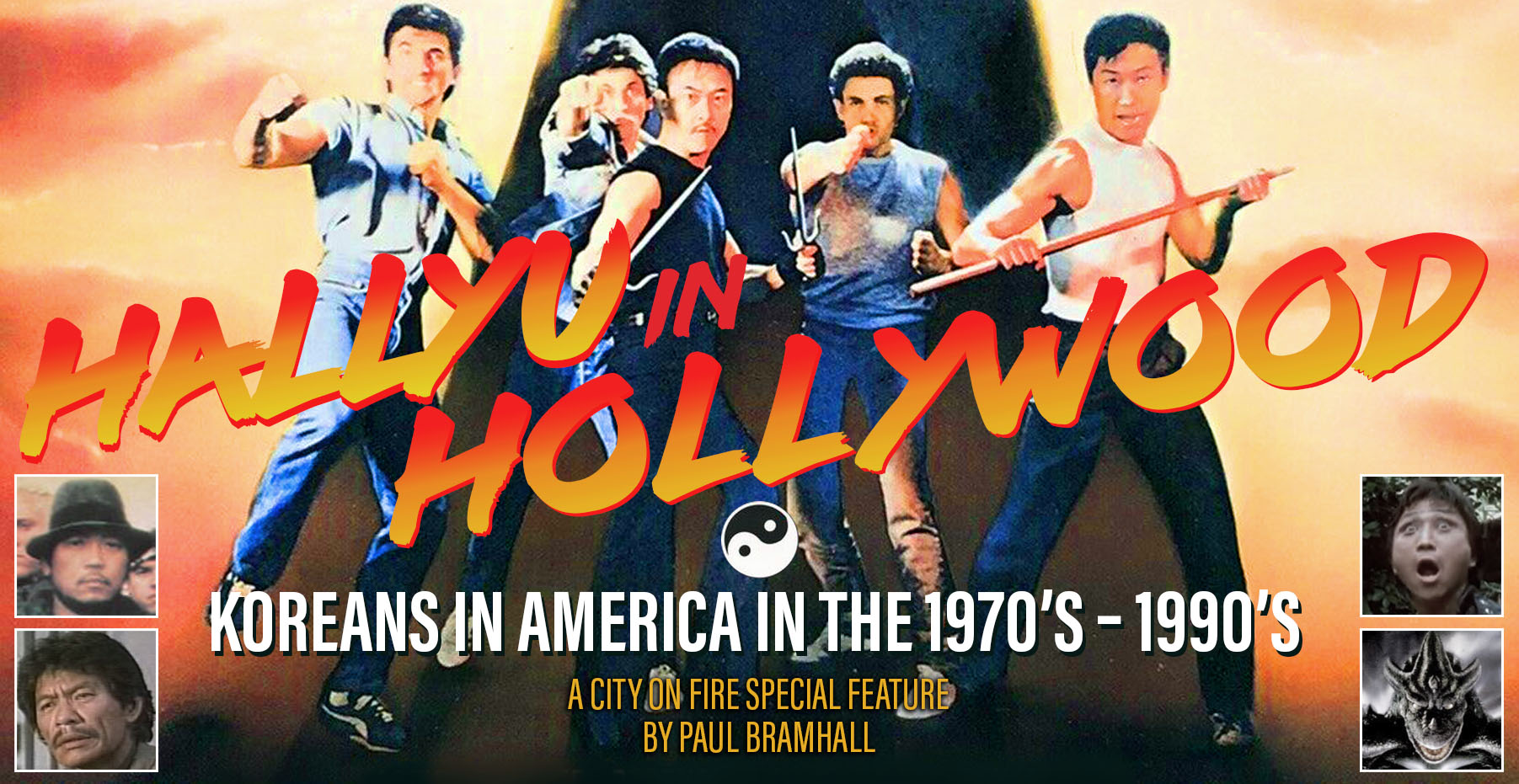
Korean cinema has come a long way since the beginning of the Korean Wave in the late 90’s and early 00’s, culminating in 2020 when Bong Joon-ho’s Parasite cleaned up at the Oscars. Of course Koreans have been present in Hollywood before Parasite gained global attention, with the likes of Lee Byung-hun (Terminator Genisys, The Magnificent Seven), Bae Doona (Cloud Atlas, Jupiter Ascending), and Choi Min-sik (Lucy) all taking on significant roles in Tinsel Town productions. Bong Joon-ho himself helmed the English language production Snowpiercer in 2013, while fellow directors like Kim Ji-woon worked with Arnold Schwarzenegger on The Last Stand, and Park Chan-wook with Nicole Kidman on Stoker (notably all from the same year).
What’s not so well known, is that Koreans were around making movies in the U.S. long before the Korean Wave kicked off, dating back to the mid-70’s. They may not necessarily be the big blockbusters of recent years, or even be any good for that matter, but they were around! So, if you’re looking for an undiscovered gem akin to Parasite, I’ll provide fair warning that you’re in the wrong place. However if you’re into ninjas who seek revenge against bands that sing derogatory songs about them, watching Bruce Lee jump out of his own grave from a bolt of lightning, or even CGI monsters that look like they were created on a Commodore 64, you’re in the right place!
Below we take a look at 25 productions from the 70’s through to the 90’s (plus 4 honourable mentions as a bonus) that were either made by a Korean director or starred a Korean as the lead. So join us, as we delve into the unexplored world of Koreans doing their thing in the US of A during the 70’s, 80’s, and 90’s!
Visitor of America aka Bruce Lee Fights Back from the Grave (1976)
Perhaps the most infamous of all the Korean movies made in the States, in 1976 director Lee Doo-yong was already familiar with the martial arts genre having helmed a number of movies that starred Han Yong-cheol. While talent scouting in the US for a movie he intended to film there, Doo-yong approached Jun Chong, a Taekwondo instructor based in Hollywood, and was suitably impressed enough for him to score the lead role. That movie was Visitor of America (which also features a young Sho Kosugi in a minor role), and normally this is where we’d say, “and the rest is history”.
Not here though, as despite being a hit in Asia, Visitor of America was never shown in the place it was filmed. That was until some distributors looking to make a quick buck picked it up, believing Chong to have a passing resemblance to Bruce Lee. Despite having nothing to do with the Little Dragon, the innovative western distributors simply added a few seconds of newly filmed footage showing Bruce Lee’s grave at the beginning, which is subsequently hit by lightning causing ‘Bruce Lee’ to leap out of the ground! Slap it with the new name of Bruce Lee Fights Back from the Grave and re-name Chong as Bruce K.L. Lea, suddenly Doo-yong’s movie finally found its audience in America (and arguably all over the globe!).
Furious (1984)
In a case of all roads leading back to Bruce Lee Fights Back from the Grave, 8 years later a pair of Jun Chong’s students would headline this truly bizarre Avant Garde piece of kung fu filmmaking – the brothers known as Simon and Philip Rhee. Furious was shot in just one week for $30,000 in Southern California, and is the kind of movie that has to be seen to be believed. At its most basic, we can say it involves Simon Rhee out to avenge the murder of his sister. However describing it in such a way doesn’t capture the many nuances that Furious graces the screen with, such as the evil magicians who shoot chickens (live ones!) out of their hands, and the part about aliens controlling the astral plane.
Despite its complete wackiness and blatantly low budget, as an opportunity for the Rhee brothers to strut their stuff onscreen for the first time, it does their talents justice. Given control to choreograph and film the fight scenes, the brothers brought along their own students as extras (including a young Loren Avedon), and the power of taekwondo is on full display. Complete with musical interludes, Furious is so out there that it wouldn’t be a surprise if it threw in a song dedicated to taekwondo, but alas that honor belongs to a title further down the list.
China Town aka L.A. Streetfighters aka Ninja Turf (1985)
This is the first movie on the list to be directed by Park Woo-sang, so I’ll give fair warning that he’s going to show up 5 more times. No other Korean director was more active in the US in the 80’s and 90’s, and his name is synonymous with low (what often looked like zero) budget martial arts flicks. If he doesn’t sound familiar, it could be because when he relocated to America he went under the name Richard Park. In Korea he directed schlocky but entertaining kung fu flicks like My Name is Twin Legs aka Strike of the Thunderkick Tiger and The Fourth Largest Shaolin Temple aka Shaolin: The Blood Mission. Once in the States though, Woo-sang’s productions mostly looked like he called everyone from the local Korean community in L.A. and roped them into working on his films in some capacity.
China Town was his first production to shoot in the States, and was similarly the first to be financed by Jun Chong’s newly established production company, Action Brothers Productions. The tale of a Korean and Chinese high school rivalry in L.A.’s China Town, where all the students look at least 30, China Town is notable for not only featuring Chong himself, but also the likes of Philip Rhee, Loren Avedon, and Bill ‘Superfoot’ Wallace. This was the first U.S. production to be choreographed by the Mad Korean, Kwan Yung-Moon, following his migration to the States (he’d go on to choreograph Miami Connection), and China Town would set the standard for most of Woo-sang’s American filmography – poorly lit fight scenes, horrendous dialogue, and bargain basement production values. Despite all of these factors, somehow China Town still has a kind of unique, inexplicable charm.
Manchurian Avenger (1985)
Shot in 1982 but not released until 1985, this would be the first U.S. production to feature Bobby Kim, a taekwondo grandmaster who migrated to Colorado in the late 70’s. Known as the Asian Charles Bronson (you’ll know why as soon as you see him), Kim had a successful movie career in Korea, featuring in the likes of A Viper and The Deadly Kick (opposite Lo Lieh). While the prospect of bringing the Korean taekwondo style of action to a wild west setting is an exciting prospect, preceding similar ideas that would be explored in the likes Once Upon a Time in China and America and Shanghai Knights decades later, onscreen it’s quite the opposite.
Manchurian Avenger pits Bobby Kim against Bill ‘Superfoot’ Wallace 3 years before Wallace had a similar match up with Jackie Chan (and personally I hope Manchurian Avenger’s eventual release in 1985 was due to Wallace appearing in The Protector that same year, rather than anything to do with China Town aka L.A. Streetfighters!). However as an introduction to Bobby Kim’s talents, it’s difficult to get worse than Manchurian Avenger (difficult, not impossible, because we’re not through with the list yet). An amateur affair all around from a director for whom this is there 1 and only credit, featuring a cast mostly made up of local Colorado townsfolk, this is best avoided unless you’re a real Bobby Kim enthusiast. Or wish there was an alternate universe Death Wish sequel out there somewhere.
Deep Blue Night (1985)
While on the surface Deep Blue Night looks like a typical melodrama from the era, what sets it apart is that it was filmed entirely on location in L.A. That, and it’s possibly the only time in the legendary Ahn Sung-ki’s career when he’s played what can best be described as an asshole. Dreaming of living in the U.S., he leaves his pregnant wife behind in Korea in order to get a green card, which he does via the rather dodgy plan of entering into an arranged marriage with a Korean woman already living there. Played by Chang Mi-hee, after her own marriage fails she resorts to helping Korean men enter the U.S. under the pretence of being in a relationship, however when she starts to develop feelings for Sung-ki events rapidly transpire to head towards a tragic end.
Director Bae Chang-ho debuted in 1982 with the iconic People in the Slum, which would mark the start of a collaboration with Ahn Sung-ki that would last the next 10 years across 12 movies. While Deep Blue Night is far from the best of their collaborations, it is an interesting time capsule into how Korea perceived America in the mid-80’s. Of course it also comes with awkward English dialogue, including phrases which definitely haven’t aged well over 35 years later, however the cinematography and foreboding tone that permeates throughout make it worth a watch.
Miami Connection (1987)
Park Woo-sang, or Richard Park, is back (and this time he gets in front of the camera too!)! However this time he isn’t entirely responsible for the classic slice of so-bad-it’s-good cinema that is Miami Connection. That award belongs to Y.K. Kim, a taekwondo grandmaster who these days can be found promoting his self-help programs on American home shopping channels. Back in the 80’s though, he thought the best way to promote his positive thinking was to make a movie, which he wrote, produced, and starred in, subsequently almost making himself bankrupt. The story of a group of college friends (yep, we’re back to 30 year old’s playing teenagers) who form the band Dragon Sound, the bands good vibes and songs about defeating ninjas (and taekwondo, see I was going somewhere with that earlier comment!) capture the attention of the evil Miami Ninjas.
Miami Connection is impossible to do justice to with only a couple of paragraphs, so I won’t try. Ultimately Y.K. Kim also received a co-director credit, as after every distributor and studio on the face of the earth recommended throwing the movie in the trash, he decided to bring the cast back together a couple of years later and shoot a more upbeat and action packed finale. Well, almost all the cast, the main villain Jo Si-yung who we leave decked out in a white ninja costume must have been too busy, since he suddenly turns into a Caucasian guy for the final fight. Ninja magic I guess!
Silent Assassins (1988)
3 years after China Town aka L.A. Streetfighters, Silent Assassins would mark the sophomore feature from Jun Chong’s Action Brothers Productions. Ditching Park Woo-sang, here Chong would collaborate again with director Lee Doo-yong from his debut in Visitor of America aka Bruce Lee Fights Back from the Grave, reuniting them after 12 years. Chong once more brings onboard his own students to create a series of fight scenes that deliver, even if nothing else does. In the starring role is probably Chong’s most recognizable student, Sam Jones, the guy who played Flash Gordon in the 1980 camp classic. Adding to the stellar casting choice is Linda Blair playing his wife. So yes, this is the movie you never knew you needed – Flash Gordon, Regan from The Exorcist, and a resurrected Bruce Lee teaming up to take on, you guessed it, ninjas!
Production values fare slightly better than the abysmal China Town aka L.A. Streetfighters, and just to clarify what I mean by that statement, it looks like they perhaps found an extra $10 bill to play with. However there’s enough B-movie entertainment here to make Silent Assassins (of whom never appear – every scene the ninjas appear in they yell at the top of their lungs) a fun way to pass 90 minutes. As a bonus, we get Philip Rhee making an appearance a year before his scene stealing turn in Best of the Best, clocking in a bathroom brawl against his brother Simon which is almost worth the price of admission.
Taekwondo Boy Ernie and Master Kim (1989)
Mistakenly listed on IMDB as starring the Charles Bronson-esque Bobby Kim, this is in fact the one and only film credit belonging to a certain Bobby J Kim. Naturally, he plays a taekwondo teacher called Master Kim living in the U.S., who takes a student named Ernie under his wings. Keeping with the theme, Ernie is played by Ernie Reyes Jr. Yes, that Ernie Reyes Jr. Here just 17 and a year away from his career defining role in Teenage Mutant Ninja Turtles II: The Secret of the Ooze, in Taekwondo Boy Ernie and Master Kim the pair get involved in a shady businessman’s drug trafficking operation, and of course do what they need to do to take him down.
Sitting in the director’s chair is Nam Gi-nam, who helmed some of the most atrocious Korean kung fu movies known to man, including a handful that starred Bruce Le (Return of Red Tiger being one of them, which should tell you everything). Taekwondo Boy Ernie and Master Kim was only released in Korea, and how Gi-nam came to direct a movie in the US will likely remain one of life’s greatest mysteries, however the even bigger questions is – whatever happened to Bobby J Kim?
Fatal Revenge (1989)
While many of the Korean martial artists making movies in the U.S. during the 80’s and 90’s could best be described as working in a niche genre, it’s safe to say that even those of us who are aware of the likes of Bobby Kim and Jun Chong may still have never heard the name Julian Lee. A taekwondo champion who relocated to the States aged 14, Lee was a stuntman on director Philip J. Roth’s 1988 TV movie Bad Trip, and Roth was so impressed with Lee’s kicks that he decided to make a movie featuring Lee as the star. So Fatal Revenge was born, and while I can confirm it was released on VHS, tragically finding any reviews or even any clips of it proves to be an impossible task.
What’s perhaps more amazing about Fatal Revenge and Julian Lee’s casting, is that far from being a flash in the pan (Y.K. Lee we’re looking at you), Lee would go on to headline 6 further movies over the course of the next 22 years. So yes, if you’re reading that as a warning that this won’t be the last time for him to appear on the list, you’d be correct.
Street Soldiers (1991)
The third and final movie to be produced by Jun Chong’s Action Brothers Productions is by some considered to be the best (although let’s be honest, the standard isn’t exactly high). A kind of martial arts themed take on West Side Story, featuring that distinctive Jun Chong trademark of casting a bunch of 30+ year old actors as college students, and of course acting performances capable of making a grown man weep. The real ace that Street Soldiers has up its sleeve is the casting of legendary bootmaster Hwang Jang Lee. Playing the bodyguard of the main villain, this would be the only American production Jang Lee would appear in, and it’s a memorable one not so much for his kicks as the blatantly fake cobra that’s draped around his neck for the entire movie. It’s one of those quirks that has to be seen to be believed.
Jang Lee actually took his sons name for his American debut, so is credited as Jason Hwang. When it comes to the million-dollar question though, the answer is thankfully yes, we do get a Jun Chong versus Hwang Jang Lee showdown. Looking visibly beefed up from how we’re used to seeing him, Jang Lee proves that he still has the moves, just don’t go in expecting anything that comes close to his work in Hong Kong or Korea. Notably, Chong would disappear from the movie industry after Street Soldiers, and reappear 15 years later in 2006 to produce and appear in Maximum Cage Fighting. Oh, and for anyone wondering – no, director Lee Harry isn’t Korean. These names can get confusing!
Look at Me America aka Gang Justice (1991)
You can’t keep a good man down, so over 5 years after Miami Connection (at least the parts he filmed!), Park Woo-sang returned to the directors’ chair as Richard Park for Look at Me America aka Gang Justice! Perhaps impressed at Joon Kim’s tussle with Hwang Jang Lee in Street Soldiers from the same year, here Woo-sang upgrades Kim to the starring role, playing a character who finds himself constantly bullied for being the son of Asian immigrants. Woo-sang once again assembles a cast who look to comprise of members of the local Korean community, offering up horrendous acting and odd pacing issues.
However Look at Me America aka Gang Justice does at least offer up Erik Estrada, bizarrely playing a “rich white man”, despite being, well, not white. Here Woo-sang goes for the kind of downbeat ending that drove Y.K. Kim to reshoot the finale of Miami Connection, and it noticeably doesn’t have as much martial arts action as his other efforts, making its poor production values all the more intolerable. Perhaps the most entertaining element of Look at Me America is the artwork that graced its various VHS releases in the States under the title Gang Justice. Featuring images which have nothing to do with the movie itself, and a complete lack of Joon Kim in any shape of form, it’s little wonder those that hit the rental stores were left bewildered by the movie they were presented with.
Kill Line (1991)
Kill Line makes it a hat-trick for 1991, and sees the return of Bobby Kim, still looking to put Colorado on the map as the new home of taekwondo action, and still making a complete pig’s ear of it. Similar to the way Manchurian Avenger was shot in 1982 but shelved until 1985, so Kill Line was shot in 1989, but wouldn’t be released until a couple of years later. Moving from the wild west to contemporary small-town America, Kill Line sees Kim return to Colorado after spending 10 years in prison for a crime he didn’t commit. Hassled by the local townsfolk and sheriff, not entirely unlike John Rambo was in First Blood, Kim soon finds himself dealing with the locals through a series of hesitant punches and kicks thrown so slowly, if you were to play them in slow motion you’d have an entire movie.
Like the work of his contemporaries Park Woo-sang and Jun Chong, Kill Line is a painfully low budget affair, with the only cast member who has an ounce of martial arts talent being Bobby Kim himself. Directed by the mysterious Richard H. Kim, of which Kill Line is the only credit to his name, in my review I speculated that it could well be an alias for Bobby Kim himself. While he can’t avoid the fact that he starred in Kill Line, by changing his name he could at least claim to not have directed such a terminally dull piece of filmmaking.
My Samurai (1992)
Keeping good on our promise, with My Samurai Julian Lee is back, and this production could well be considered his most well-known (thanks in no small part to the 2019 Blu-ray release from the MVD Rewind Collection). It was also the production in which Lee must have thought Bobby Kim was doing a great job of putting Colorado on the map, as Lee was also based there and would start filming most of his movies in Denver moving forward.
It’s the usual story of a kid that attends Lee’s martial arts school witnessing some mobsters making a hit, and subsequently Lee having to step in to take care of them and save the day. Annoyingly, the kid (played by John Kallo in his one and only film appearance) refers to Lee as “My Samurai” throughout, despite the martial arts in question being taekwondo, but hey, it’s 1992 so we’ll cut them some slack.
As an interesting sidenote, Lee’s starring role here was as a result of him being an executive producer for Imperial Entertainment’s Ironheart starring Bolo from the same year, who at the time were looking for their next B-movie action star. Like they say, it’s all about being in the right place at the right time!
Black Belt Angels (1995)
In 1995 Bobby Kim returned to the screen in Black Belt Angels, and this time he’s paired with director Kim Hyo-cheon (unlike IMDB, which lists the director as Kim Chi, I can confirm that no fermented vegetables had an active role in directing Black Belt Angels). As an ironic sidenote, Hyo-cheon directed the only movie which was filmed in Korea that Jun Chong (the one guy who keeps popping up in this list!) would appear in, with 1980’s Lonely Star of Osaka. Just like both Manchurian Avenger and Kill Line, Black Belt Angels was shot long before it actually received a release (in what I like to call Bobby Kim Syndrome), with this time a staggering 12 years passing since shooting was completed in 1983, which technically makes it Kim’s 2nd U.S. production.
Unsurprisingly, Black Belt Angels is about a taekwondo school that’s on the brink of closure, and the students who’d do anything to keep it open. Naturally, their efforts evoke the wrath of a mobster and his army of trained ninjas, so it’s a good job our young heroines have black belts! What follows is a mix of overly long chase scenes involving roller blades, red white and blue wardrobe changes to kick ass, and more “hi-yah’s!” than you can shake a stick out. Of course, the obligatory boom mics also make an appearance, as they do rather disturbingly in many of the movies listed so far, but on the bright side, the 4 leading ladies do at least have some legitimate taekwondo moves which they convincingly bust out. It’s just a shame about everything else.
3 Ninjas: Knuckle Up (1995)
There is perhaps no name more synonymous with Korean cinema than Shin Sang-ok, a director active in the industry since the early 1950’s, and responsible for such classics as A Flower in Hell and My Mother and Her Guest. Sang-ok was married to the most popular actress of the era, Choi Eun-hee, who in 1978 was kidnapped by North Korean agents in Hong Kong on the order of Kim Jong-il. Flying to Hong Kong himself to investigate only led to also being kidnapped, and after spending time in a re-education camp following two failed escape attempts, in 1983 he started directing movies in North Korea under the guidance of Kim Jung-il. The most famous of which became the North Korean kaiju flick, Pulgasari.
While promoting their movies in Vienna in 1986, both Sang-ok and Eun-hee made a dash for the U.S. Embassy and were granted asylum, eventually being settled in Virginia before relocating to L.A. in the 90’s. Fearful to go back to South Korea in case the security police didn’t trust his kidnapping story, Sang-ok pulled a Park Woo-sang and changed his name to Simon Sheen, taking on a directing gig in 1995 to helm 3 Ninjas: Knuckle Up, the 2nd sequel to the 1992 kids flick 3 Ninjas. Sang-ok actually got involved as one of the writers on the first sequel, 1994’s 3 Ninjas Kick Back, and would executively produce all 3 of the sequels (yes, there was a 3 Ninjas: High Noon at Mega Mountain in 1998, after which he’d return to Korea). As a useless piece of trivia, Park Woo-sang himself served as an associate producer on the 1992 original, giving all 4 entries a Korean connection!
China Town 2 aka American Chinatown (1995)
The omni-present Park Woo-sang is back with a thematic sequel to 1985’s China Town aka L.A. Streetfighters, and this time the ace up his sleeve is the casting of Lee Tae-jun, the grandmaster son of the founder of the Hwa Rang Do martial art (and who Mickey Rourke credits with getting his life back on track). Well, Lee Tae-jun, and Robert D’Zar of Maniac Cop fame. The cast list of China Town 2 brings together all the Korean martial artists that had been making movies (and I use the term loosely) in America in the 80’s and 90’s – we get Jun Chong, Bobby Kim, and even Philip Rhee makes an appearance. It’s almost like a Koreans living in the U.S. who can kick your ass version of The Expendables, and perhaps it could have been good if only anyone other than Park Woo-sang was in the director’s chair.
Seemingly determined to prove that it’s possible to make movies in a country for a whole decade and not improve in the slightest, China Town 2 aka American Chinatown is best described as an ordeal to get through. As per usual, the plot involves a martial artist who’s been raised as an orphan (although unlike in Miami Connection, at least here they don’t form a band), with the focus being on a budding romance between Tae-jun and a girl he saves one day. Complications ensue when she turns out to be the adopted sister of the gang boss who raised him. If you’re here for some Hwa Rang Do action, there’s smidgens of it here and there, however don’t expect to be able to see anything thanks to Woo-sang’s patented ‘film everything so dark you can’t see a thing’ technique. Amazingly, Woo-sang would somehow still go onto direct another movie in the U.S.
Best of the Best 3: No Turning Back (1995)
In many ways a precursor to the route the Undisputed franchise would take a decade later with the character of Boyka, it was Philip Rhee who did it first with the Best of the Best series. With the first 2 helmed by director Robert Radler and following the tournament structure with Eric Roberts as the lead, in the 3rd outing Rhee himself makes his directorial debut and casts his character Tommy Lee as the star of the show. Moving completely away from the tournament structure that Best of the Best had been about to this point, No Turning Back sees Rhee’s character return to his rural hometown (to visit a sister that’s never been mentioned until this point), only to find out it’s been taken over by skinhead Nazi white supremacists.
Featuring an early big screen appearance by Gina Gershon as a choir teacher who Rhee teams up with, the anti-racism message that the first-time director aims to deliver is frequently ham-fisted and often involves incredible cheesiness. However if you’re willing to accept that this isn’t the same Best of the Best that came before, there’s still fun to be had with Rhee’s first attempt as both director and leading man, feeling very much like a slice of PM Entertainment-lite mixed with skinheads being kicked in the face. There are worse combinations out there.
Windy City (1997)
Sometimes a movie comes along which simply stumps you, even in 2021, a fact which is both reassuring and surprising at the same time!
For this entry, Windy City is that movie. A production that was shot in New York and released on Korean VHS by Han Cinetown, a label that usually specialised in erotic cinema, beyond this information, there’s nothing. Nothing on Google, and even nothing on Korean search engines such as Naver, it’s almost as if the movie didn’t exist.
The VHS of Windy City is still doing the rounds amongst collectors of the country’s output, so the least we can do is provide you with a picture of it to prove we’re not making this up.
K.K Family List (1997)
After starring in China Town 2, Hwa Rang Do grandmaster Lee Tae-jun wanted to make a movie about being a Korean American in L.A., and pitched a story of 2 brothers struggling to fit in who end up becoming members of the Korean Killers gang (a real gang that operated out of L.A.). That movie became K.K Family List which started shooting in 1995, and most likely not knowing any better, Tae-jun enlisted Park Woo-sang to sit in the director’s chair, meaning filming most likely kicked off once China Town 2 wrapped. However only 70% of the intended footage was shot, and it wasn’t until a couple of years later that the reels were taken off the shelf and attempted to be edited into a cohesive final product. Of course, cohesiveness isn’t exactly Woo-sang’s specialty, so it’s debatable even if the remaining 30% had been shot if it would have come out any better.
K.K Family List is interesting in that it features Shin Hyun-jun (Bichunmoo, Shadowless Sword) in his only American role playing the other brother. At the time he would have also been filming The Gingko Bed, and he does an amicable job with the English dialogue, here playing a character in a relationship with the late Karen Kim (Isaac Florentine’s U.S. Seals II). Similar to Taekwondo Boy Ernie and Master Kim, K.K Family List only received a release in Korea, and the original film footage was lost. Today K.K Family List’s only physical release remains on Korean VHS, and despite its low budget and countless glaring flaws, it does actually succeed in being mildly more entertaining than China Town 2 (plus we get Bobby Kim and Jun Chong making appearances here as well!).
https://www.youtube.com/watch?v=ERPRNT72_ek
Best of the Best 4: Without Warning (1998)
Any obligation that Philip Rhee may have felt towards franchise continuity with the 3rd instalment of Best of the Best is thrown aside completely for round 4, Without Warning. In fact here it’s safe to say that Rhee is Tommy Lee in name only, with a script that seems to have been retrofitted to become a part of the Best of the Best franchise (it was co-written by Rhee). For a start, he’s now a widow with a six-year-old daughter! With Best of the Best 3: No Turning Back only being released 3 years earlier, it’s clear that making sense is no longer a priority. But really, who cares when you have as classic a slice of 90’s action movie plotting as you can get – Rhee ends up on the run from the Russian mafia when he comes into the possession of a stolen computer disk!
Rhee once again directs and stars, and as mentioned this time contributed to the script as well! It’s obvious that he was positioning himself here as a kind of Segal/Van Damme-esque style action star, and despite Without Warning’s B-movie trappings, he does a good job of kicking ass and taking names. It’s somewhat of a shame then that after this, he’d disappear from the film industry for the next 17 years, only returning in 2015 for Underdog Kids, which he also directed, wrote, and starred in.
Tiger Street (1998)
Julian Lee returned to screens after a 6-year hiatus in 1998 with Tiger Street, going head to head with Philip Rhee’s Best of the Best 4: Without Warning in a battle of the high kicking B-movies. Unsurprisingly Lee is playing – you guessed it – a taekwondo teacher, once again teaching kids the martial arts way and keeping them away from the violent drug gangs that plague the local area, said area being that drug riddled cesspit that is Denver, Colorado. I swear adult taekwondo students didn’t exist in this particular genre, but that’s just my observation. The twist in Tiger Street is that Lee is a reluctant teacher. Having previously taught taekwondo in North Korea where it’s outlawed, when his class is discovered by Kim Jung-il’s cronies they’re none too pleased, and he’s thrown in prison.
The memory continues to haunt him and he hasn’t taught since, however thanks to Lee’s limited acting range it doesn’t take long for him to get over them and agree to teach once more. Featuring Lee’s usual brand of wooden acting, energetic kicks, and of course the obligatory director for whom the production is the sole credit to their name, as the titular Tiger of the title (yes, his character names a street after himself) Lee’s return to the screen delivers everything you’d expect.
A Night on the Water (1998)
Ok we admit we’re kind of cheating with this one since it takes place in Canada, but we took an executive decision to include it anyway as a beneficial warning to anyone contemplating checking it out. Initially banned in Korea, A Night on the Water is the only time Lee Sung-hi would headline a Korean production, a former Playboy model who’s claim to fame is being the first Asian to feature on the cover of the magazine. In it, she plays a prostitute looking to escape the memories of her abusive stepfather through a mix of tequila, sex, and drugs. She also dreams about turning into a whale, but I won’t get into that here. Her life remains largely the same after she meets a Korean guy who’s been fired from his job at an investment company, and has fallen into a cycle of drinking and gambling.
The guy is played by Yu Ji-ha in his one and only role, which perhaps give some indication to the quality of his acting. Directed by Kang Jung-soo, who’d go onto helm the early Korean Wave production Run 2 U, quite what A Night on the Water is supposed to be about is never entirely clear. Instead, we’re left to watch Lee Sung-hi and Yu Ji-ha spend a lot of time having sex in slow motion and discuss her obsession with turning into a whale. All of this ultimately leads to a rather miserable ending, the only consolation being that anyone who reaches that point will have likely already been feeling miserable for some time already.
American Dragons aka Double Edge (1998)
In the late 90’s and early 00’s Park Joong-hoon took on a handful of English language roles. In 1997 he took the lead in the identity mix-up comedy Wanted, which was filmed in Australia, and in 2002 he played a supporting role alongside the likes of Mark Wahlberg and Thandie Newton in Jonathan Demme’s The Truth About Charlie. It was in 1998’s American Dragons though when he’d get a chance at co-starring status alongside Michael Biehn. Playing a Seoul cop who travels to America in pursuit of an elusive yakuza assassin that killed his family years earlier, Joong-hoon’s pairing with Biehn’s American cop was a surprisingly effective one, elevating what would otherwise be another run-of-the-mill B-movie to something more enjoyable.
In many ways American Dragons could be viewed as Two Cops: International (if it’s good enough for Men in Black!), following Joong-hoon’s similar roles in 1993’s Two Cops (which paired him with frequent collaborator Ahn Sung-ki) and 1996’s Two Cops 2 (which paired him with Kim Bo-sung). Involving a plot which sees them caught between the Italian mafia and Japanese yakuza, led by Cary-Hiroyuki Tagawa, American Dragons contains enough fisticuffs, taekwondo kicks, and bullets to make it a worthy entry in Joong-hoon’s filmography.
The Cut Runs Deep (1999)
Before director John H. Lee became known as the guy that helmed the likes of Korean Wave classic tearjerker A Moment to Remember and war flicks 71 – Into the Fire and Operation Chromite, in 1999 he would debut with The Cut Runs Deep. Having studied at the Tisch School of Arts in New York after moving to the States at age 12, Lee drew on Martin Scorsese’s gangster classics to create the tale of a half Korean half white Chinese restaurant delivery boy who crosses paths with the leader of a Korean gang. Played by Alexandre Manning and David Lee McInnis respectively, this was the debut for both of them, and while Manning only appeared in a handful of minor roles before disappearing from the film industry, McInnis has gone on to have a successful acting career (notably playing Raiden in 2013’s Mortal Kombat: Legacy).
While The Cut Runs Deep is undeniably a little rough around the edges, the result of a script which sometimes wears its Scorsese influences a little too much on its sleeve paired with some amateur performances, ultimately Lee’s talent shines through in the moody cinematography and lighting. It’s certainly no surprise that once he moved back to Korea he went onto bigger and better things.
Yonggary (1999) / Reptilian aka Reptile 2001 (2001)
Comedian Shim Hyung-rae may not be well known in the west, but during the 80’s and 90’s he was hugely popular in Korea, starring in over 40 movies including the popular Wuroi-mae series, a kind of Korean tokusatsu franchise involving large robots, aliens, and plenty of brash comedic hijinks. Hyung-rae directed several productions himself (as well as appearing in many helmed by Nam Gi-nam of Taekwondo Boy Ernie and Master Kim fame), and in 1999 decided it was time to go international, one may say over ambitiously deciding to remake the 1967 Korean kaiju classic Yongary, Monster from the Deep. Again we’re cheating a little on this one, since 1999’s Yonggary was shot in Korea, but we’re including it since it features an American cast to give the look and feel of a Hollywood production, with a finale supposedly taking place in L.A. (key word – supposedly).
After a successful run domestically upon release, Hyung-rae pulled a George Lucas, and decided to fiddle with the finished movie by further adding new CG effects and sets, a slightly different story, and additional characters. In Korea it was released as Yonggary: 2001 Upgrade Edition, and the lambasting it received off critics was only matched by how hard it flopped at the box office. Somewhat ironically, it was the 2001 version that was picked up for US distribution, where it was re-titled Reptilian. With Nollywood level effects, horrendous acting from almost everyone, and more head scratching moments than you can shake a stick at, as a piece of WTF cinema Reptilian is up there, and it wouldn’t be the last time for Hyung-rae to indulge in the kaiju genre.
Honourable Mentions –
The following 4 movies were made in the post 2000-era, however we’re including them here as the Korean talent that’s behind them have their careers firmly rooted in the 80’s and 90’s.
D-War aka Dragon Wars (2007)
After the obsessive production of Yonggary, in 2007 Shim Hyung-rae returned with D-War, a movie he was certain would gain him international recognition. So confident was he in fact, that the Korean version ended with a message from him declaring “D-War and I will succeed in the world market without fail”. This time, he actually did make it to L.A., with roughly half the film shooting on location there for a tale of mythical creatures which visit the Earth every 500 years causing havoc and destruction. Now it’s up to guys like Robert Forster and Jason Behr to stop them, so yes, D-War also comes with a better acting pedigree than Yonggary.
With significantly improved special effects that can legitimately be called impressive and plenty of spectacle, Hyung-rae still couldn’t escape the same pitfalls that plagued his earlier production – laughable plotting, a cringe worthy script, and inconsistent pacing. D-War did at least achieve an actual theatrical run in the U.S., but it wasn’t enough to stop Hyung-rae being declared bankrupt in 2013 (after failing to convince the bank that gave him 5 billion won towards D-War’s production that it was an investment rather than a loan) and sentenced to 10 months prison time for failing to pay staffs wages.
The Last Godfather (2010)
In retrospect, now knowing that Shim Hyung-rae would be declared bankrupt just 3 years after The Last Godfather’s release, it’s likely that it was produced in an attempt to make some box office that would pay off his significant debt from the flop that was D-War. It’s as good a theory as any as to why The Last Godfather exists, a question asked by just about anyone that’s had to sit through it. After the big budget spectacles of Yonggary and D-War, both of which were the most expensive Korean productions ever made at the time, for Hyung-rae’s final U.S. production he reverted back to the kind of comedic buffoon character that he was famous for playing 20 years earlier.
The story of a retiring mafia boss who announces he’ll be handing over the reins to his illegitimate son, who has the mental capacity of a 6-year old (note this is my personal opinion, not an actual plot detail) and is played by Hyung-rae, leading to plenty of broad comedy hijinks. Ever stretching beyond his means, Hyung-rae originally wanted to use CGI to cast Marlon Brando as his father, however when it proved to be too costly, he hired Harvey Keitel instead. We can only assume Hyung-rae knew some real mafia members to convince an actor of Keitel’s calibre to say yes.
Assassins’ Code (2011)
Julian Lee would headline 3 movies in the new millennium, which include 2001’s Dragon and the Hawk and 2008’s Little Bear and the Master, but the one we’re going to include for the purpose of this list is 2011’s Assassins’ Code. Lee’s cinematic swansong would finally bring about what everyone (and by everyone, I mean no one) had been waiting for, as Colorado’s 2 Korean taekwondo masters finally share the screen together. Yes, Bobby Kim puts in an appearance, his first onscreen role since 1997’s K.K Family List. Unfortunately for Lee, while his final movie appearance was a starring role, he doesn’t get a mention on any of Assassins’ Code’s marketing material, most likely due to the casting of Choi Min-soo as the North Korean antagonist.
One of Korea’s most recognizable faces, after starring in the likes of Seoul and Sword in the Moon by 2011 Min-soo had developed a reputation for being difficult to work with due to his short temper, and I can only imagine that was somehow a contributing factor to explain his appearance here. It’s Min-soo that receives top billing in Assassins’ Code (along with Hong Kong’s Tiffany Yee) for a tale of a missing disk that contains instructions for how to make a deadly missile. Yes, even the plot comes straight out of the 90’s.
Underdog Kids (2015)
After Run 2 U Philip Rhee disappeared from the film industry, only to re-emerge 17 years later with what he described as his most personal project, Underdog Kids. Rhee once again sat in the director’s chair, wrote the script, and starred. The reason why we’re including Underdog Kids in the list is that it very much feels like a case of the old gang getting back together, as Rhee also brings onboard his own teacher Jun Chong. Chong kicked off this list with Visitor of America aka Bruce Lee Fights Back from the Grave, so it seems fitting that he’s also in the movie that will close it. Outside of Rhee and Chong, other kung fu cinema luminaries like Dan Insonato, Benny ‘The Jet’ Urquidez, Don ‘The Dragon’ Wilson, and Richard Norton also make appearances, reading like a dream cast of fighting talent.
Sadly, although not entirely unexpectedly, Rhee’s passion project can also be considered his most torturous movie to sit through. Seemingly possessed by the spirit of Park Woo-sang, the directing and editing is a mess, with a script so saccharine and cheesy a barf bag comes as a recommended accompaniment to any attempted viewing. Oh, and the likes of Chong and co. not only don’t get any fight scenes, they don’t even get to speak! Yes it’s a kids flick about inner city kids learning martial arts so they can go up against the dastardly Beverly Hills Scorpions, but even the most forgiving kid may struggle with this one.

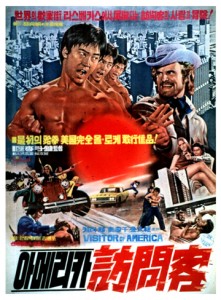

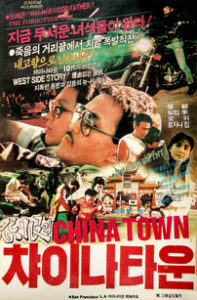

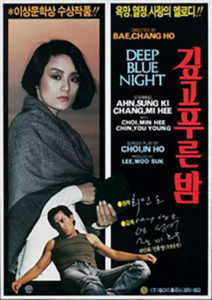
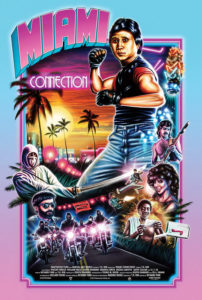
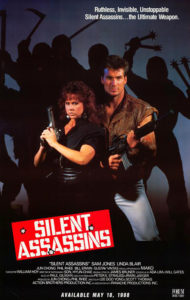
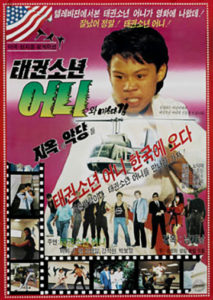
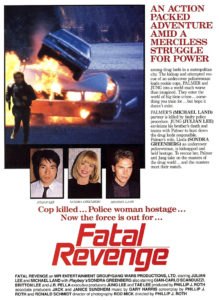
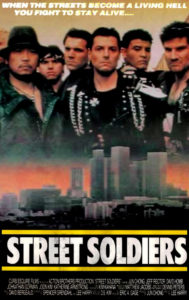
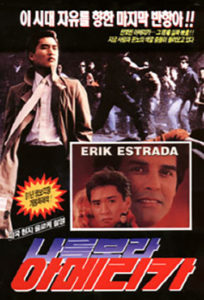

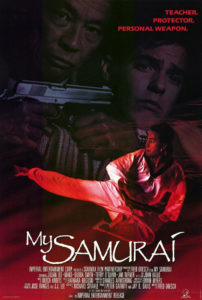
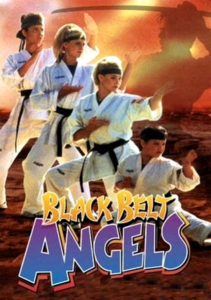
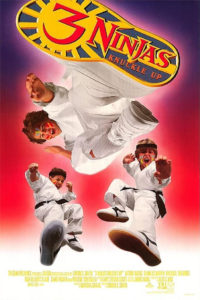
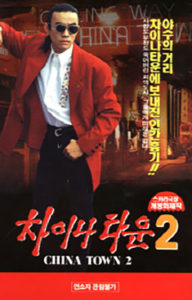
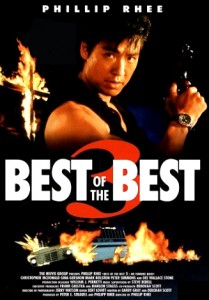
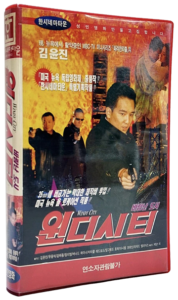
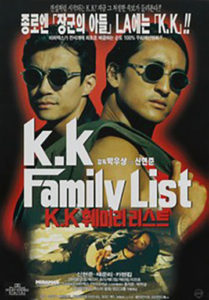

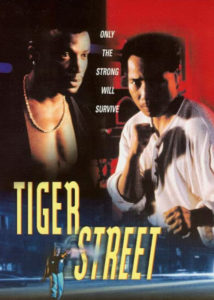
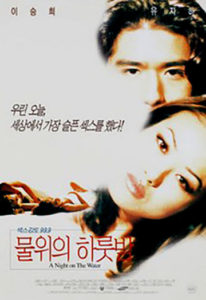

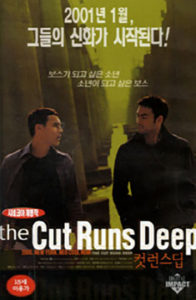
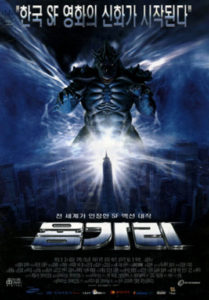
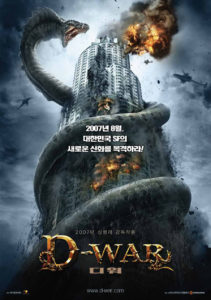

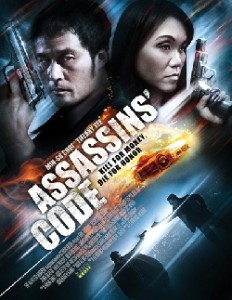
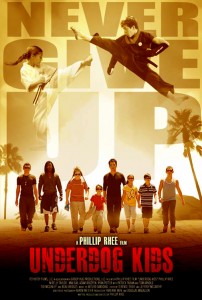


Hah! This is a fun list you compiled. I’ve seen a number of these. MANCHURIAN AVENGER had potential, and Bobby Kim had some decent fight scenes, but the face-off between him and Bill Wallace is essentially non-existent and nothing more than a tease. I had already seen Bill and JC duke it out in THE PROTECTOR, so I was psyched for something akin to that, though I kept my expectations low. It didn’t even meet that.
FURIOUS, the Rhee brothers effort, can be found on the streaming service Tubi, and it is a hoot. Horribly acted with a plot that makes you roll your eyes, the fights in it show their future potential, and is well worth watching simply for the novelty of it.
SILENT ASSASSINS is one of those “so bad it’s good” kind of movies. It’s unintentionally funny, and for me Phillip Rhee is the best part of it. He has a smattering of fight scenes, but each is really good. What I enjoyed about it is his character. He plays a dojo owner who is very narcissistic and a gifted martial artist, but doesn’t really want to put his skills to use and fight anyone because he’s actually afraid to. He is hysterical. This movie is hard to come by.
Cheers Scott! Regarding ‘Silent Assassins’, not sure if you mean hard to come by in terms of its availability on streaming services, but if you’re old school enough then the UK DVD that was released in 2005 is still readily available (here’s a link to it on amazon, and is also the version I’m the proud/shameless owner of).
This is quite a history lesson! It’s amazing how much trash got made, but I did enjoy American Dragons as well. I’m glad to see it get the credit it’s earned.
Excellent list and here’s some info that may help:
In Miami Connection, the Caucasian guy who replaced Jo Si-yung as the white ninja is actually William Ergle, who played biker gang leader Jeff. Ergle was just one of Y.K. Kim’s students in the film. Even the club owner was an assistant instructor at Kim’s TKD academy, Martial Arts World, in Orlando.
Another Korean martial artist who did films in the U.S. is Jino Kang. He is a Hapkido grandmaster whose work includes “Fist 2 Fist” (2011) opposite Human Weapon’s Bill Duff and an in-name sequel, Fist 2 Fist 2: Weapon of Choice (2014). Both were not that great to be honest, but thought it should be worth mentioning.
Thanks Albert! Fellow COF contributor Zach Nix did a Jino Kang interview and retrospective back in 2017 which you can check out via the link.
That’s awesome! I will check it out. I interviewed Furious co-director Tim Everitt in 2015. It was actually my 1st interview under the WorldFilmGeek banner. He talked about making the film, working with the Rhe Brothers and the reactions the film would get.
https://worldfilmgeek.com/2015/07/18/interview-with-tim-everitt-co-director-of-furious/
Nice piece, but you forgot to mention They Call Me Bruce and They Still Call Me Bruce with Johnny Yune.
That’s a fair call. I was concentrating so much on Korean talent that either worked on home soil and transferred their talents (however questionable they may be!) to the US, or were simply adept at kicking people in the face, that I completely overlooked the comedic talents of Johnny Yune!
I think most people dismissed these movies (particularly the ones in the early 80s) as general “martial arts movies” made by Asian people, as opposed to American movies that had a lot of “Korean” talent behind them.
For the longest time, I thought Furious was just a semi-obscure “probably Chinese-made” kung fu flick, but it was only when I finally watched it (a few years ago) I realized it had a “Korean” driving force. Same can be said for actual Korean-produced kung fu productions like Double Dragon in Last Duel, which looked like any other kung fu flick from Taiwan or Hong Kong. I just didn’t see the difference when I was a young kid. Of course back then, ALL these movies – whether Chinese, Japanese or Korean – were commonly known as “kung fu flicks”. Come to think of it, I always thought Ninja Turf was an American-made movie with a Japanese cast!
Great feature, Paul. There’s a certain nostalgia factor to it. Especially for guys like me who remember seeing these movies on the same video rental shelves as some of the usual Ocean Shores, ASE, Media, Cinema Group, Video Gem, etc martial arts film releases.
BRUCE LEE FIGHTS BACK FROM THE GRAVE is an nostalgic fave of mine. I expect if the Korean version turns up, it will lack most of the awesome score, as the English version (dubbed in Hong Kong, with the Korean characters now referred to as Chinese) has music from a 1977 film, ROLLERCOASTER, whilst the Korean version was released spring 1976
Indeed, it’s a shame Bruceploitation star Dragon Lee never made it over to the States. I’m sure he would have ended up paired with Park Woo-sang, but I’d watch it anyway!
Thanks for putting these together. I liked the pieces you did on Japanese and Chinese action as well. You are definitely a scholar of the genre and nobody else is putting out pieces like this.
I knew there’d have to be heavy coverage of Bobby Kim, and you didn’t disappoint!
I recently got an on-camera interview with Master Kim for a Bronsploitation documentary I’m currently in production on — focusing on the Korean Bronson (Kim), the Chilean Bronson (Fenelon Guajardo) and the Hungarian Bronson (Robert Bronzi). Click my name to be linked to the Insta I just created for the doc….
Bronson-ploitation documentary? lol No way. Sign us up!